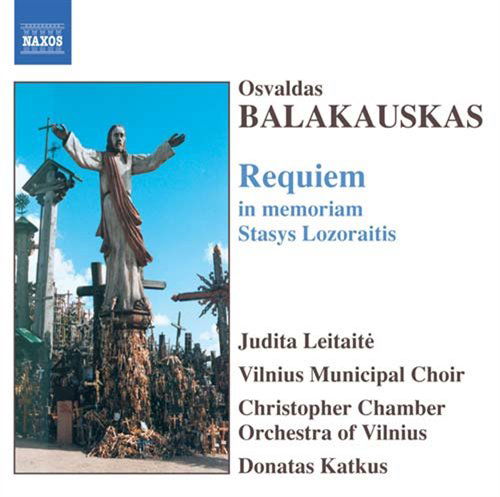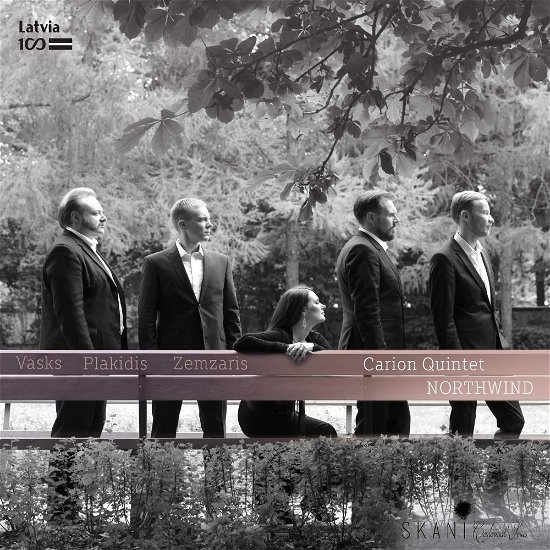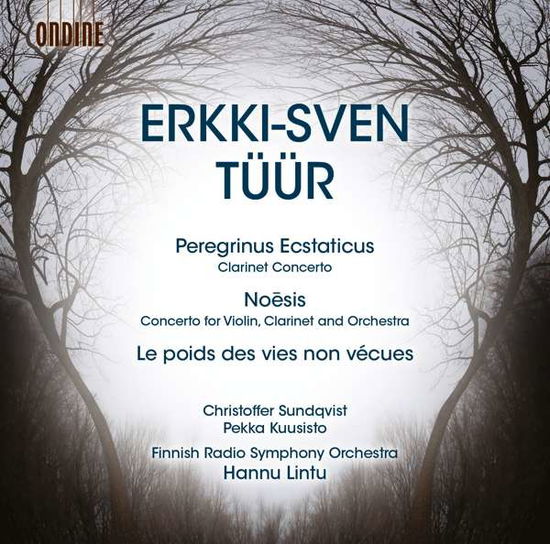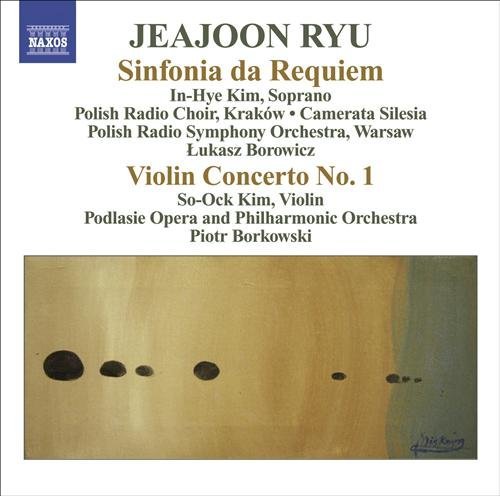
Tell your friends about this item:
Balakauskasrequiem In Memoriam Vilnius Christopher Cokatkus
Balakauskasrequiem In Memoriam
Vilnius Christopher Cokatkus
Balakauskas's Requiem is an intimate chamber work in character and scoring, performed by a mezzo- soprano, choir and chamber orchestra. The composer himself claims to have created an emphatically traditional work, though it would appear that here he upholds the old division between the spheres of musica sacra, with it's cultivation of true-and-tried values, and that of the innovation-seeking musica profana. The musical language of the Requiem, compared with Balakauskas's earlier works, is more restrained, the modal structure based on medieval principles. The very first sounds of the Requiem are representative of it's style: a characteristic succession of parallel fifths on the underlying D in the strings, the functional centre of the whole work, and choir voices moving in the spirit of a twelfth-century Léonin organum. As the work develops, the pedal point moves through a circle of fifths, and returns once again to D in the last part of the Agnus Dei (finalis in Dorian mode). In the Confutatis the composer introduces bitonality, as if to illustrate the text. There are other illustrative sections in the work as well, such as the shout of the trombone in the Tuba mirum. Yet, according to the composer, the relationship here between the music and the text is objective, and the music is as it is supposed to be when speaking the word of God. The soloist and choir parts maintain a comfortable range, and are based on the old psalmodic principles of antiphonal and responsorial singing, with the occasional inclusion of the orchestra, as when instrumental sound blocks play against the choir, as at the beginning of Sanctus. The choir melodies are frequently sung in a homo-rhythmic organum. Meanwhile the solo part, first heard in the Tuba mirum, is given embellishments, in the spirit of Gregorian chant melismata, which give the music it's distinctive elegance. Among the various unexpected connections, there is the beginning of the Rex tremendae, men's voices accompanied by low strings, reminiscent of the composer's reference to yet another source, Georgian hymns. The rhythmic structure of the Requiem is related to the technique of the ars nova mensuralists; according to the composer, the score could even be non-metered. The whole of the composition has no characteristics of culminative development, and the soft contrasts are derived by combining parts of diverse character, once again with an orientation to the aesthetic of the Renaissance and earlier times.
CHRISTOPHER CHAMBER ORCHESTRA/KATKUS/LEITAITE
| Media | Music CD (Compact Disc) |
| Number of discs | 1 |
| Composer | Balakauskas, Osvaldas |
| Released | November 29, 2004 |
| EAN/UPC | 0747313260423 |
| Label | NAXOS 8557604 |
| Genre | Choral Music |
| Dimensions | 124 × 142 × 10 mm · 100 g (Weight (estimated)) |
| Conductor | Katkus |
| Orchestra | Christopher Chamber Orchestra |
Others have also bought
More offers: CDs for € 12.99
Show allSee all of Vilnius Christopher Cokatkus ( e.g. CD )

 Christmas presents can be returned until 31 January
Christmas presents can be returned until 31 January








![Cover for Laura Marling · A Creature I Dont Know (CD) [Digipak] (2011)](https://imusic.b-cdn.net/images/item/original/822/5099908789822.jpg?laura-marling-2011-a-creature-i-dont-know-cd&class=scaled&v=1310912326)
![Cover for Hakon Stene · Lush Laments for Lazy Mammal (CD) [Digipak] (2014)](https://imusic.b-cdn.net/images/item/original/442/7033662025442.jpg?hakon-stene-2014-lush-laments-for-lazy-mammal-cd&class=scaled&v=1397150961)


![Cover for Corina Belcea, Axel Schacher, · Britten: War Requiem (CD) [Remastered edition] (2006)](https://imusic.b-cdn.net/images/item/original/115/0028947575115.jpg?corina-belcea-axel-schacher-2006-britten-war-requiem-cd&class=scaled&v=1140963723)



![Cover for TOMORROW X TOGETHER (TXT) · CHAOS CHAPTER : FREEZE (CD/Merch) [Target Exclusive edition] (2021)](https://imusic.b-cdn.net/images/item/original/051/0192641603051.jpg?tomorrow-x-together-txt-2021-chaos-chapter-freeze-cd-merch&class=scaled&v=1756373113)





![Cover for Ed Sheeran · Divide (CD) [Deluxe, Limited edition] (2017)](https://imusic.b-cdn.net/images/item/original/022/0190295859022.jpg?ed-sheeran-2017-divide-cd&class=scaled&v=1484913060)
![Cover for PinkPantheress · Fancy That (CD) [Jewel Case edition] (2025)](https://imusic.b-cdn.net/images/item/original/706/5021732610706.jpg?pinkpantheress-2025-fancy-that-cd&class=scaled&v=1744728262)
![Cover for Nirvana · Nevermind (CD) [Remastered edition] (2011)](https://imusic.b-cdn.net/images/item/original/089/0602527779089.jpg?nirvana-2011-nevermind-cd&class=scaled&v=1397731506)
![Cover for Kiss · Destroyer (CD) [45th Anniversary edition] (2021)](https://imusic.b-cdn.net/images/item/original/149/0602438184149.jpg?kiss-2021-destroyer-cd&class=scaled&v=1633597712)
![Cover for Cocteau Twins · Heaven Or Las Vegas (CD) [Remastered edition] (2004)](https://imusic.b-cdn.net/images/item/original/228/0652637001228.jpg?cocteau-twins-2004-heaven-or-las-vegas-cd&class=scaled&v=1088892057)

![Cover for Bruce Springsteen · Nebraska (CD) [Remastered edition] (2015)](https://imusic.b-cdn.net/images/item/original/822/0888750987822.jpg?bruce-springsteen-2015-nebraska-cd&class=scaled&v=1432406542)



![Cover for Lady Gaga · The Fame Monster (CD) [Deluxe edition] (2009)](https://imusic.b-cdn.net/images/item/original/766/0602527252766.jpg?lady-gaga-2009-the-fame-monster-cd&class=scaled&v=1269343474)
![Cover for Ariana Grande · My Everything (CD) [Deluxe edition] (2014)](https://imusic.b-cdn.net/images/item/original/527/0602537939527.jpg?ariana-grande-2014-my-everything-cd&class=scaled&v=1406816989)
![Cover for Dua Lipa · Future Nostalgia - The Moonlight Edition (CD) [The Moonlight edition] (2021)](https://imusic.b-cdn.net/images/item/original/108/0190295076108.jpg?dua-lipa-2021-future-nostalgia-the-moonlight-edition-cd&class=scaled&v=1613748652)
![Cover for Bjork · Vespertine (CD) [Limited edition] (2022)](https://imusic.b-cdn.net/images/item/original/026/5016958046026.jpg?bjork-2022-vespertine-cd&class=scaled&v=1091603395)
![Cover for Jeff Buckley · Grace (CD) [Expanded edition] (2004)](https://imusic.b-cdn.net/images/item/original/850/5099747592850.jpg?jeff-buckley-2004-grace-cd&class=scaled&v=1090836530)






![Cover for Coldplay · Moon Music (CD) [Limited EcoCD edition] (2024)](https://imusic.b-cdn.net/images/item/original/807/5021732278807.jpg?coldplay-2024-moon-music-cd&class=scaled&v=1718695802)
![Cover for Blackpink · The Album (CD) [Limited edition] (2020)](https://imusic.b-cdn.net/images/item/original/589/0602435042589.jpg?blackpink-2020-the-album-cd&class=scaled&v=1600200507)


![Cover for 50 Cent · Get Rich Or Die Tryin (CD) [Limited edition] (2003)](https://imusic.b-cdn.net/images/item/original/422/0606949356422.jpg?50-cent-2003-get-rich-or-die-tryin-cd&class=scaled&v=1398200796)

![Cover for Hozier (CD) [10th Anniversary Deluxe edition] (2025)](https://imusic.b-cdn.net/images/item/original/678/0602478080678.jpg?hozier-2025-hozier-cd&class=scaled&v=1742562962)